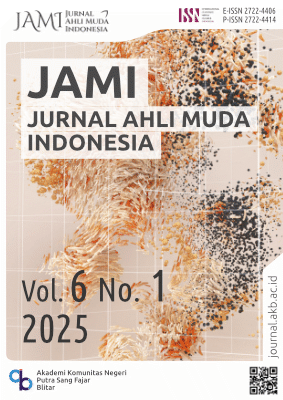Representation of Teachers' Lives through Memes in Indonesia and United States: A Multimodal Analysis
 Abstract views: 129
,
Abstract views: 129
,
 PDF downloads: 74
PDF downloads: 74
Abstract
This study employed a descriptive qualitative design and adopts a social semiotics approach to investigate how memes portray the lives of teachers in Indonesia and the United States. Memes, as a form of digital narrative, offer unique insights into culturally specific experiences and societal perceptions of educators. This study analyzed a selection of widely circulated memes to understand how semiotic resources - such as imagery, text, and symbols are mobilized to construct meanings about teachers’ roles and challenges. Through this lens, memes are not only seen as entertainment but also as sites of social commentary that influence public discourse on education. By focusing on humor and social critique, memes revealed deeper societal attitude toward the teaching profession, including issues related to teacher identity, economic challenges, and the status of educators in different cultural contexts. By using descriptive qualitative method, it was found that in Indonesia, for instance, memes frequently highlight the struggles faced by guru honor (honorary teachers), drawing attention to the impact of financial instability on perceptions of educational quality. In addition, the challenges that teachers have to face in Indonesia was clearly depicted through the images of criminalization in educational sector. Meanwhile, in U.S memes depicted teachers as a profession with a heavy workload. To represent this meaning, the memes in U.S mostly used animals as their modes such as cats and squirrels to represent their fast-paced job. The findings suggest that memes play a significant role in shaping and reflecting public perceptions, contributing to broader conversations about the value of education and the evolving identity of teachers in a digital era.
Key Words
Memes, Multimodality, Social Semiotics, Teachers
Downloads
References
Kress, G. and Leeuwen, T.V. (2001). Multimodal Discourse: The Modes and Media of Contemporary Communication. New York: Oxford University Press
Kress, G and Leeuwen, T.V. (2006). Reading Images. New York: Routledge
Leeuwen, T.V. (2005). Introducing Social Semiotics. New York: Routledge
Maharani, Y.M. (2022). A Multimodal Analysis of Disney Memes Revealing Woman Stereotype in Society. Language Horizon: Journal of Language Studies, 10(1), 30-34
Norries, S., and Maier, C.D. (2014). Interactions, Images and Text. Walter de Gruyter: Berlin
Shifman ,L. (2014). Memes in Digital Culture. London: Massachusetts Institute of Technology
Ugola, B. (2022). Multimodal Analysis of Memes in Tweets of Response to Nigeria’s Minister of Health’s Statement on Resident Doctors in Nigeria. Zamfara International Journal of Humanities. 1(3), pp.1-22
Wong, M. (2019). Multimodal Communication: A Social Semiotic Approach to Text and Image in Print and Digital Media.
Copyright (c) 2025 Betharia Sembiring Pandia

This work is licensed under a Creative Commons Attribution-ShareAlike 4.0 International License.
Authors who publish with this journal agree to the following terms:
1. Copyright on any article is retained by the author(s).
2. The author grants the journal, right of first publication with the work simultaneously licensed under a Creative Commons Attribution License that allows others to share the work with an acknowledgment of the work’s authorship and initial publication in this journal.
3. Authors are able to enter into separate, additional contractual arrangements for the non-exclusive distribution of the journal’s published version of the work (e.g., post it to an institutional repository or publish it in a book), with an acknowledgment of its initial publication in this journal.
4. Authors are permitted and encouraged to post their work online (e.g., in institutional repositories or on their website) prior to and during the submission process, as it can lead to productive exchanges, as well as earlier and greater citation of published work.
5. The article and any associated published material is distributed under the Creative Commons Attribution-ShareAlike 4.0 International License




